Are you struggling with low survey completion rates? This article will equip you with proven tactics to dramatically increase participation and collect more valuable data from your target audience.
Why Response Rates Matter
Low response rates can severely undermine your research efforts. When only a small percentage of your target audience participates, you risk collecting data that doesn’t accurately represent the population you’re studying. This leads to skewed results and potentially misleading conclusions.
Response rates below the acceptable threshold should raise red flags about potential non-response bias. Even well-designed surveys with methodologically sound questions can fail if they don’t attract sufficient participation. The good news is that with the right approach, you can significantly improve your response rates without compromising data quality.
Design Surveys People Actually Want to Complete
The first step to boosting participation is creating surveys that respect respondents’ time and cognitive energy.
Keep your surveys concise by including only essential questions that directly address your research objectives. Studies show that completion rates drop dramatically after several minutes of engagement. If your survey takes too long, consider breaking it into multiple shorter surveys or using skip logic to ensure participants only see relevant questions.
Make navigation intuitive with progress indicators that show respondents how far they’ve come and how much remains. This creates psychological momentum and reduces abandonment rates considerably. Mobile optimization is no longer optional—most survey responses now come from mobile devices, so ensure your survey functions flawlessly on smartphones.
Start with engaging, easy-to-answer questions to build momentum, saving demographic or sensitive questions for later. This approach has been shown to increase completion rates compared to surveys that begin with personal information requests.
Incentivize Participation Effectively
Strategic incentives can dramatically boost response rates, but they require careful implementation.
Consider what truly motivates your audience. Monetary incentives work well for general populations, with research showing even small amounts can substantially increase participation. However, for specialized audiences, non-monetary incentives like exclusive content, early access to findings, or professional recognition may prove more effective.
When using monetary incentives, guaranteed small rewards outperform large lottery-style prizes. Immediate rewards (delivered upon completion) yield higher response rates than delayed gratification. For professional audiences, emphasize how their input will drive meaningful change or advance knowledge in their field.
Communication Strategies That Compel Action
Your outreach approach significantly impacts participation rates.
Personalization is crucial—emails addressing recipients by name and referencing relevant information enjoy higher open rates and click-through rates than generic messages. Send invitations at optimal times: Tuesday through Thursday mornings typically yield the highest engagement for business audiences, while evenings work better for consumer research.
Implement a strategic follow-up sequence with several reminders sent to non-respondents. The first reminder should go out a few days after the initial invitation, with subsequent reminders spaced about a week apart. Each message should emphasize a different benefit of participation to appeal to various motivations.
Leverage multiple channels—email remains the primary survey distribution method, but incorporating text messages for short surveys can increase response rates significantly. Social media promotion works well for general population studies, while professional networks like LinkedIn are more effective for B2B research.
Build Long-Term Engagement
Developing a reputation for valuable surveys creates a respondent pool that’s more likely to participate in future research.
Always share results with participants in an accessible format. This demonstrates that you value their input and increases the likelihood they’ll participate in future surveys. When implementing changes based on feedback, explicitly communicate these actions to show respondents their input matters.
Create a feedback community rather than treating each survey as an isolated event. Regular but reasonable communication keeps your audience engaged without causing survey fatigue. Track participation patterns to identify your most reliable respondents and develop special recognition programs for these valuable contributors.
By implementing these evidence-based strategies, you can significantly increase your survey response rates while maintaining data quality. Remember that boosting participation isn’t just about collecting more responses—it’s about gathering more representative, actionable insights that lead to better decisions.
***


